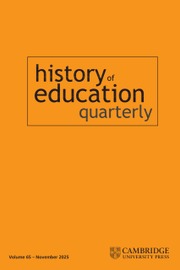Amid so-called culture wars, how do America’s teachers teach US history? Are teachers “whitewashing history” or “brainwashing children?” Loaded as these questions are, these researchers, representing the prestigious American Historical Association, sought answers to them.
They surveyed over three thousand middle and high school US history teachers in nine states (with a response rate from teachers of 13 percent). Then they interviewed over two hundred more teachers while collecting thousands of pages of actual instructional materials. But they did not observe any actual lessons.
The strange upshot of the paper is that the researchers sidestepped their initial questions quoted in the opening paragraph above and instead answered a completely different one: Where do curricular decisions get made? They locate the decentralized decision-making sites in the US’s system of schooling and ask how these diverse “layers of authority interacted to determine the character of instructional materials.”
From their survey and interviews, the researchers make five claims that emerged from their investigation. Here, the word claims could have been avoided in favor of a more straightforward one like findings. There were other examples of awkward language in the paper that often required me to reread entire paragraphs.
Here are their “findings:”
First, “apathy, not activism, is what many history teachers spend their time trying to overcome among students and parents… Teachers we engaged with don’t typically encounter politicized pressure at their job.”
Second, “in spite of the various efforts by state and local administrators to standardize and align instruction, history teachers retain substantial discretion over what they use in their daily work.” In other words, history teachers have great autonomy in the materials they choose to teach and the methods they use to teach them.
Third, even with that classroom autonomy, the researchers found:
In spite of localized structures of governance, infrequent common assessment, and loosely coupled chains of management, history teachers end up choosing and using many of the same instructional materials as their peers across the national landscape. Traditional textbooks are moving to the margins of history instruction, but not because of the perennial blame they receive for being bland or biased. The eclipse of textbooks appears to be driven chiefly by technological contexts (e.g., one-to-one computing, learning management systems, open educational resources)—and a growing perception among many teachers that the current generation of students are either unprepared or unwilling to read at length. Thirty-two percent of teachers surveyed say they never use a textbook, and those that do are more likely to describe them as “a reference” than something that they assign regularly in class or for homework.
The word eclipse in the above finding is surely an exaggeration. Although nearly one-third of history teachers do not rely upon an approved history textbook in the year 2025—a small victory for the advocates of inquiry instruction and the use of both primary and secondary sources in US history courses—two-thirds of history teachers do still depend upon a history textbook.
Fourth, “there appear to be some collateral costs to the otherwise productive focus on inquiry in the history classroom.” In the researchers’ words: “The emphasis on inquiry and literacy kept the culture wars at bay and justified social studies on terms compatible with national accountability initiatives like Common Core.” But this occurred at a cost: “Instead of serving as a textured and stirring encounter with the past, many lessons are designed toward more instrumental outcomes (e.g., assessing the validity of the evidence; extracting the main idea; using this detail to support that claim).”
Fifth—and this is less a finding drawn from the survey and interviews and more of a plea—the researchers end their report with the statement: “History teachers desire and deserve more high-quality, content-specific professional development.”
I found these statements unremarkable, even truisms, familiar to veteran teachers of US history and to scholars who have studied the practice of teaching over the past century. Overall, this is an uninformative report on teaching US history in America’s public schools.


